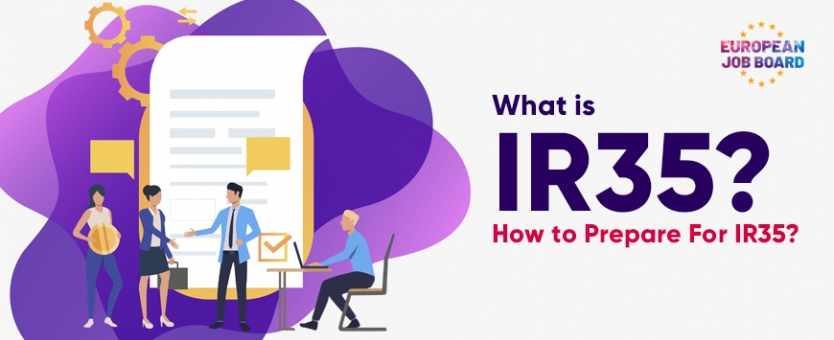


The IR35 ‘off-payroll’ rules will be applicable to the private sector starting April 2020 onwards. It shall directly affect a large number of contractors.
But what exactly does this mean? How can contractors and clients prepare themselves in advance?
“The Revenue & Customs (HMRC) has published the draft legislation for IR35 reform in the private sector, which details plans to make medium and large companies responsible for determining the tax status of the contractors they engage from 6 April 2020.” Telegraph.co.uk
The IR35 is important for recruitment agencies that place contractors. They will very often carry this liability if they handle payments to the independent workers they place. Agencies must work with end clients to ensure accurate IR35 decisions are being made.
Despite various amendments to IR35 over the years, it has been observed that many limited company owners are still unlawfully working outside the rules.
The Intermediaries Legislation (IR35) has been around since 2000 and its main objective is to remove the tax advantages of providing services through a limited company for individuals who are not truly in business on their own account. This resulted in independent workers being taxed at a similar rate to an employee, but without being offered employment rights for paying significantly more in tax. It aims to reduce tax avoidance by contractors who HMRC believe to be “disguised employees”.
The Government argues that a contractor paying less tax than employees is unfair. The IR35 reform is already implemented in the public sector and it shall soon be extended to private sector contracts in 2020. Private sector employers shall accountable to determine the IR35 status of the contractors they shall hire.
There are concerns that organisations will be cautious about contracting out work, or that contractors will need to work and operate through PAYE umbrella companies.
As a recruitment agency or end user of a contracting workforce, there are several steps that need to be followed in order to ensure you are well equipped when changes come into place
Identify the contractors you engage. How many are there? What is their current IR35 status? Will they be working from April on some other project? How important are they to the delivery of your key targets?
With answers to the above questions, ask yourself if you have the internal expertise and understanding of the IR35 legislation, else seek help from a specialist. You can even use IR35 tool, CEST.
Contractors need reassurance that their clients and agencies will prioritise accurate IR35 decisions, allowing them to operate outside the IR35 legislation.
As said above, confirm the ‘IR35 Test’ with CEST (Check Employment Status for Tax) and see how IR35 applies to individual contractors. It is a tool that asks a series of questions relating to the duties of the worker and determines their status based on the answers. You can review the employment status of individuals on a case-by-case basis. This will help you ensure that all workers are being employed in the correct manner.
From April 2020, contractors shall lose the right to set their own IR35 status. The responsibility for determining a contractor’s IR35 status will transfer to the end-client and to the ‘fee-payer’ in the supply chain.
So as a contractor, you should communicate with other fellow contractors to get a clear idea if they have held any talks with the engager. Make it clear that you operate as a legitimate business. Consider having your contract reviewed by an IR35 specialist, who can help you with risks and can offer objective advice. It’s worth ensuring your contract has a genuine right of substitution. Secure a Confirmation of Arrangements (CoA) document signed by your client. A CoA confirms that all parties in the supply chain (including the recruitment agency), are in full agreement about your IR35 status.